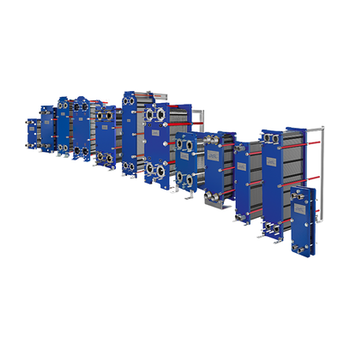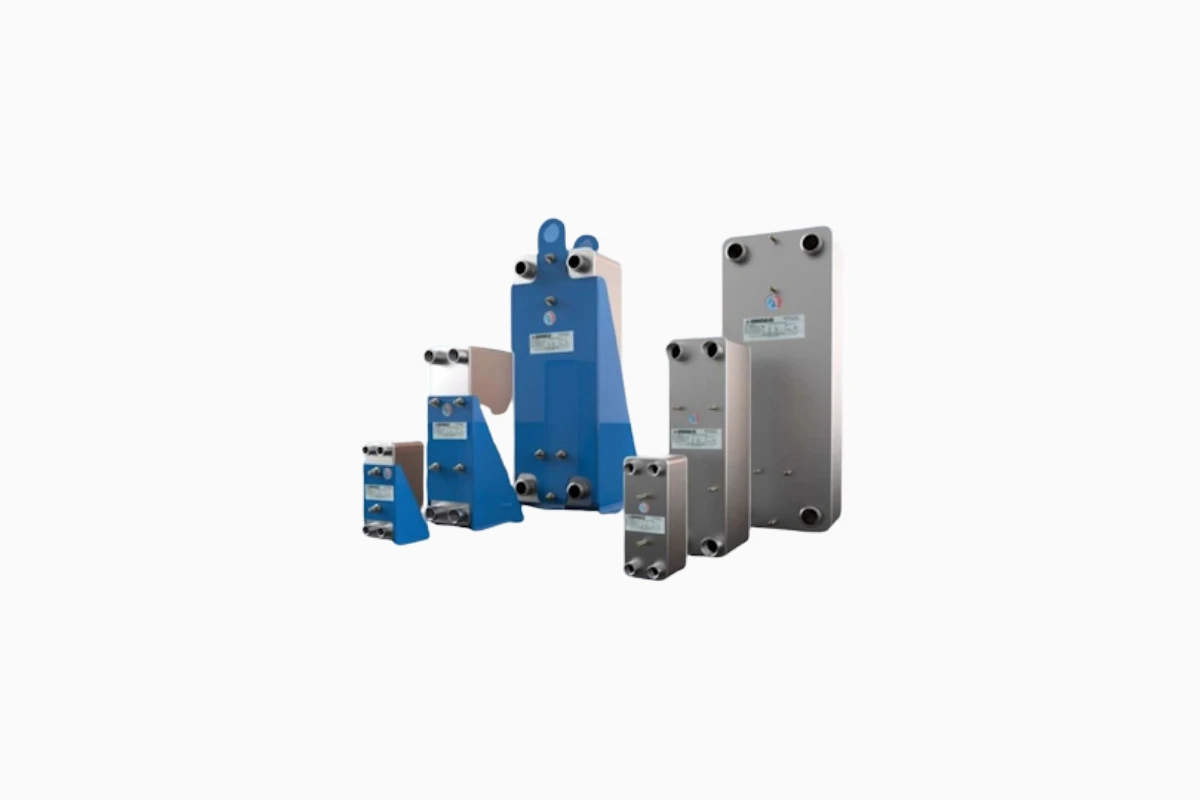Heat exchangers are devices used to transfer thermal energy between two fluids without mixing them. Heat transfer occurs through conduction across a separating surface and can be optimized by convection mechanisms. Heat exchangers are used in various sectors, from heavy industry to HVAC systems, as well as in the automotive and energy production industries. But how do heat exchangers work?
The basic operating principle is based on the temperature difference between the two fluids involved. The hotter fluid transfers heat to the cooler fluid until thermal equilibrium is reached. This process is essential for improving the energy efficiency of many industrial applications and ensuring the proper operation of machinery and systems.
To find the best solutions for your needs, visit our section dedicated to heat exchangers.

Types of heat exchangers
Heat exchangers are classified into different categories based on design and fluid flow type, including:
1. Plate heat exchangers
These consist of a series of stacked corrugated metal plates through which fluids flow. This structure ensures high thermal efficiency due to the large heat exchange surface and the turbulence generated in the fluid. They are widely used in industrial applications, HVAC systems, and the food industry.
2. Shell and tube heat exchangers
These devices consist of a bundle of tubes through which one fluid flows, while another fluid circulates around the tubes. They are particularly suitable for high-pressure and high-temperature applications, making them ideal for cooling large machinery and for the energy production sector.
3. Scraped surface heat exchangers
This type is used for highly viscous fluids or those containing solid particles. The scraping mechanism prevents residue buildup on the heat exchange surfaces, improving efficiency and preventing equipment deterioration.
Industrial applications and advantages of heat exchangers
Heat exchangers are essential components for multiple applications. In the manufacturing industry, they are used for machinery cooling, preventing overheating risks and ensuring efficient and continuous operation. In the energy sector, they play a key role in production plants, helping to improve thermodynamic efficiency. They are also crucial for refrigeration and air conditioning, ensuring the proper functioning of HVAC systems and cooling units. Finally, in the food and pharmaceutical industries, they help maintain temperature control during production processes, ensuring quality and safety.
Thanks to their versatility and ability to optimize energy consumption, heat exchangers are an indispensable solution for many industries.

